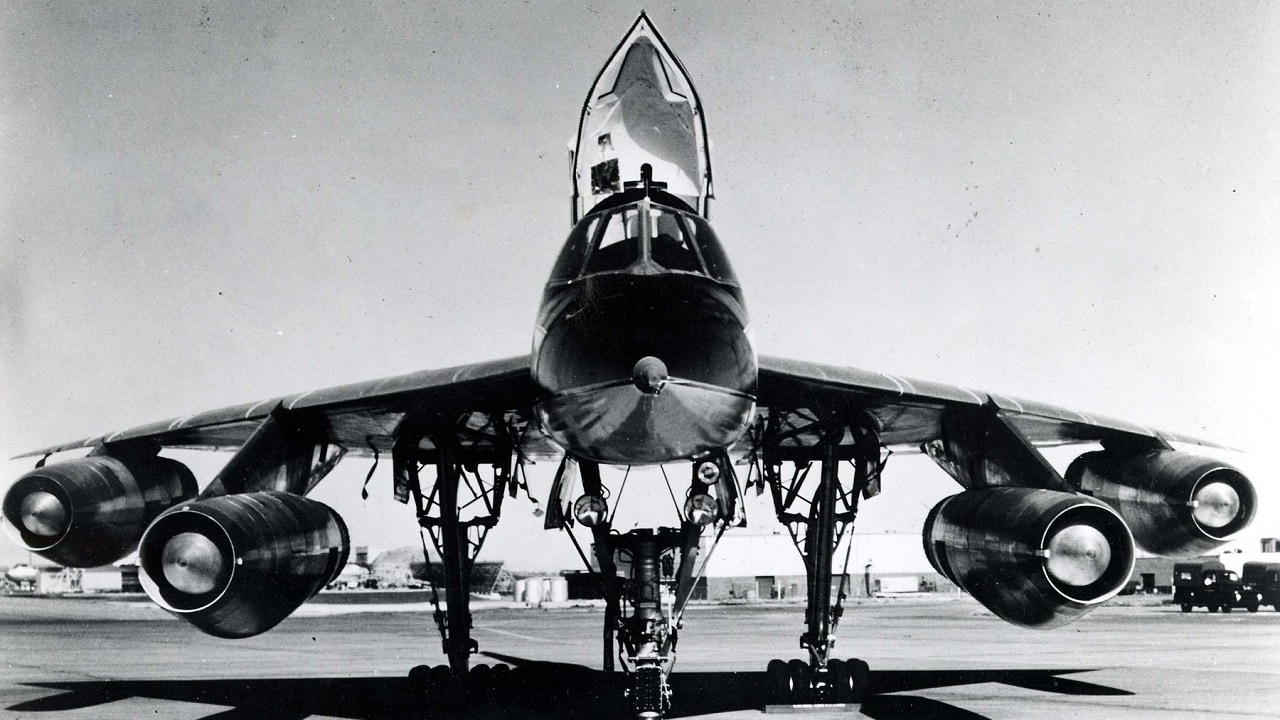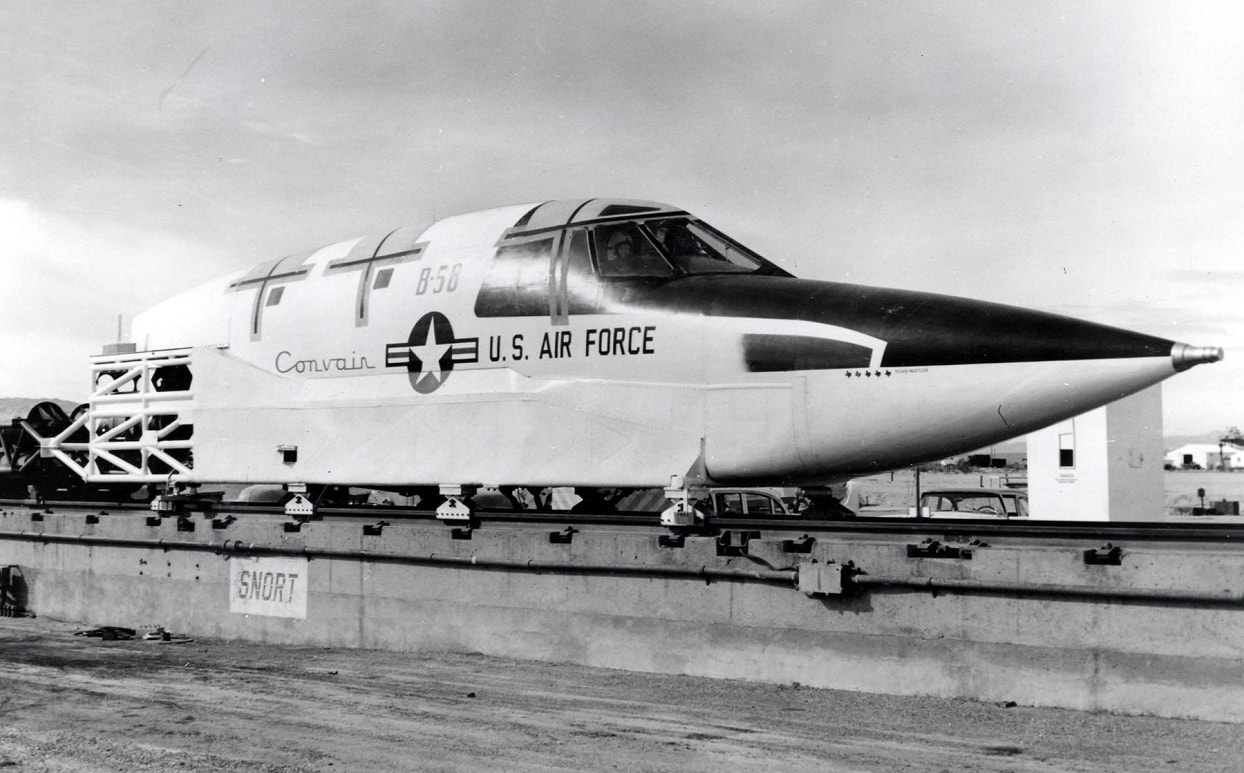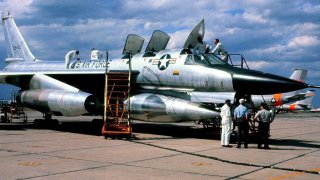B-58 Hustler: This Supersonic Bomber Was Built for War with Russia
Although it did not fully live up to its potential, the B-58 Hustler was a unique and innovative aircraft, and many new technologies were developed for use in supersonic aircraft.
Meet the B-58 Hustler: The 20th century began the era of powered flight when the Wright Brothers took to the skies in 1903. Aviation innovation didn’t stop there, and 44 years later, Chuck Yeager was the first pilot to fly supersonic - faster than the speed of sound.
Military planners had closely followed aviation development, seeing the great potential for aircraft on the battlefield. As new technologies emerged, they were swiftly employed in military aviation. Supersonic flight was no exception. In the U.S. Air Force (USAF) of today, the Mach realm is dominated by fighter interceptors: F-15s, 16s and 22s.
In the early years of supersonic flight, however, there was great interest in building a supersonic bomber capable of flying deep into Soviet territory to deliver nuclear bombs.
The attempt to capitalize on this strategy resulted in the Convair B-58 Hustler, the first supersonic bomber of the USAF.
Research and Development on B-58 Hustler
As the threat from enemy jet interceptors and surface to air missiles increased, USAF planners sought to keep the strategic bomber relevant. Its mission was nuclear deterrence, serving in concert with ICBMs and SSBNs to ensure mutual destruction should the U.S. and USSR enter into nuclear war.
In order to deliver their ordnance, strategic bombers had to fly up over the North Pole and past Soviet interceptor bases in Siberia to reach their targets. While the B-47s and B-52s had the range and payload to complete this mission, they were vulnerable to Soviet defenses. To defeat the speedy interceptors and missiles, Air Force researchers sought to procure a bomber that could fly higher and faster than these threats. In 1949, it commissioned private industry to come up with a solution.
Eventually, USAF procurement whittled the designs down to one submitted by Boeing, already a significant name in the aviation industry, and one offered by Convair. While Convair is no longer in business, at the time, they were on the cutting edge of aerospace design. Having already produced a concept jet fighter, the XF-92, they were familiar with supersonic aeronautics and delta wing designs, the form they chose for the B-58 Hustler.
Before the final selection, Convair further refined its design, incorporating a new engine and advancements in aeronautical theory, most notably the area rule regarding drag in the transonic region - airspeed between 0.75 and 1.2 Mach when an aircraft is transiting through supersonic. This resulted in a narrow, four-engined, delta-winged aircraft.

Features
The design of the B-58 incorporated several record-breaking features.
It was composed of an aluminum skin bonded to honeycomb structural elements made of aluminum or fiberglass. This significantly reduced the weight of the bomber, allowing it to top out at speeds of 1,100 knots.
Its engines featured moving inlet spikes, the first of their kind. These retracted at slower speeds and extended at high speeds to allow the engines to function most efficiently. This technology was later used on the SR-71 Blackbird, the fastest plane ever flown.
While the Hustler was a novel aircraft, its designs did impose some flight challenges on the crew. It was far less stable than its contemporaries and was more prone to depart and enter a spin. Its aerodynamics required it to reach more than 200 knots before lifting off.

A similar value at landing meant its wheels and tires had to be specially designed to take the speed. It was unable to stop without a drogue parachute.
One of the most fascinating features of the B-58 was the ejection system. In a normal ejection, only the seat fires out of the aircraft. While this serves in most situations, at high speeds, it becomes increasingly dangerous that aircrew will experience severe injuries or even death when they enter the slipstream.
Designers at Convair recognized they were producing an aircraft that would routinely find itself well over safe ejection speeds, and thus, a standard ejection seat was unfeasible. To circumvent this problem, they produced a clamshell that fit over the entire seat and aircrew. This clamshell featured its own oxygen system and enclosed the primary flight controls so aircrew could fly “turtled up” and ready for ejection at any moment. Additionally, it was buoyant and served as a life raft should crews eject over water. The clamshell ejection system was rated up to 70,000 feet and Mach 2.0.
Short Service and Shelf Life
Ultimately, the B-58 had a limited life, being operational for only a decade.
The advent of the Soviet SA-2 high altitude surface to air missile negated many of the benefits the platform afforded, namely high, fast flight.
To adapt to this threat, Air Force tacticians developed low-level ingress to stay below these systems’ radar. For an aircraft designed to fly above 50,000 feet, this low and slow flying was incredibly inefficient and would not work long-term.
During production, procurement costs ballooned meaning only 116 were produced. They also proved costly to operate with maintenance requiring expensive tools and specialized training. The high loss rate, 26 were lost to accidents, further swayed decision-makers to sunset the program.
From its initial operational designation in August, 1960, the Hustler was phased out by the end of January, 1970.
Although it did not fully live up to its potential, the B-58 Hustler was a unique and innovative aircraft and developed many new technologies for use in supersonic aircraft.
About the Author
Maya Carlin is an analyst with the Center for Security Policy and a former Anna Sobol Levy Fellow at IDC Herzliya in Israel. She has by-lines in many publications, including The National Interest, Jerusalem Post, and Times of Israel. You can follow her on Twitter: @MayaCarlin.
All images are Creative Commons.


